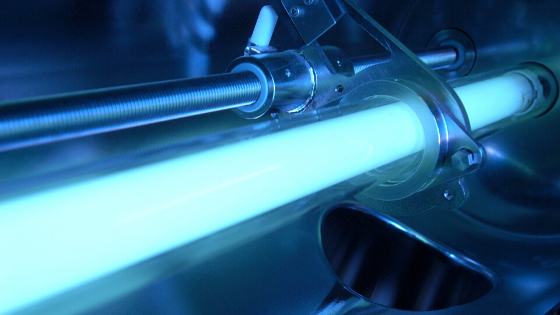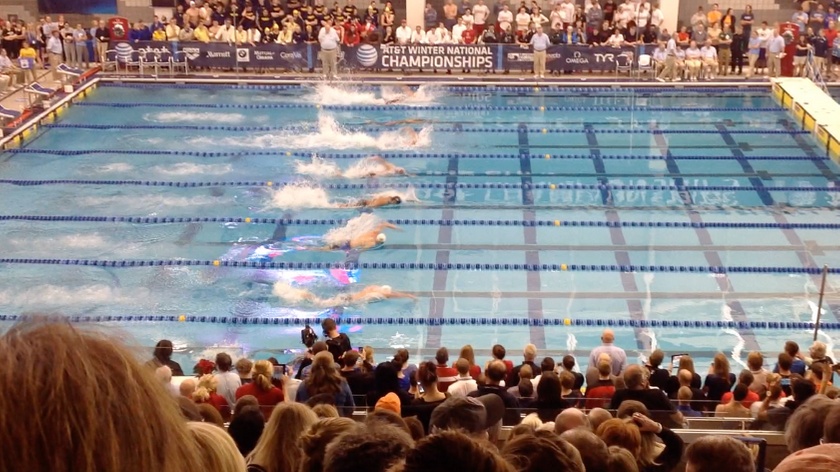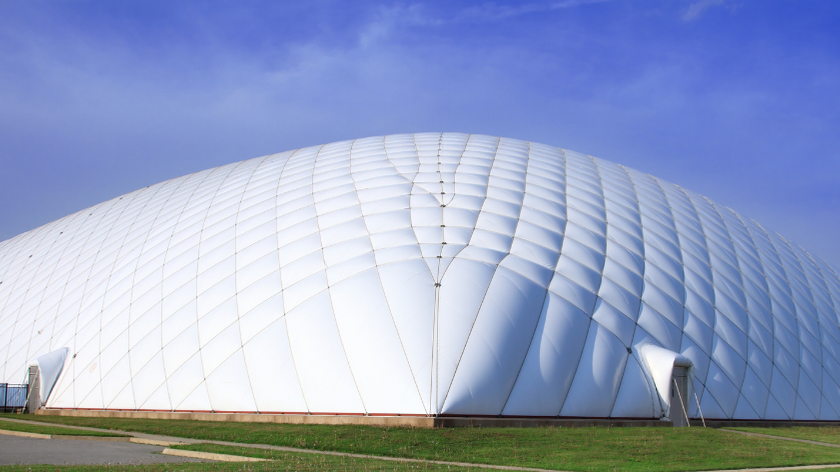Swimming Pool Air Quality Resources
Want to learn more about the air side of the pool air quality problem? This article and its supporting links are for you. We also have separate content for Pool Water Chemistry, Natatorium Design and Natatorium Operations. All of these subjects contribute to the chloramine problem that plagues indoor pools.
Sure, the chemistry that creates chloramines and other harmful disinfection byproducts (DBPs) occurs in the pool water. And, obviously, an outdoor pool won't have the same air quality challenges that a natatorium does. But once nitrogen trichloride (NCl3), aka Trichloramine off-gasses into the air, water chemistry is in the past. You now have an air quality problem that must be addressed with air physics. To do so, it takes a natatorium HVAC design that matches the pool itself, and is capable of handling the demands put on it.
In our experience, there is no "one-size-fits-all" solution to bad pool air quality. A natatorium needs well-trained operators using decent equipment that is sized properly, and the mechanical (air) equipment must also be properly designed and operated. When all of these variables move together in harmony, healthy indoor air is possible. It becomes the norm, not the exception.
Indoor Pool Air Quality
As easy as it can be to blame an HVAC system for falling short, normally that blame is misplaced. You see, a pool dehumidification system is designed to heat, cool and dehumidify air. It has no ability–nor intention–of separating chloramine-laden air from clean air. So if your natatorium relies on the pool dehumidifier to purify the air, we need to manage those expectations.
Airborne chloramines go right through normal air filters. Trichloramines are not like dust or debris, but they ARE predictable. For example, we know that trichloramine and other DBPs tend to be much heavier than oxygen. That fact alone gives us an advantage in trying to manage chloramines...but it also makes us scratch our heads when we see how most natatorium air systems are designed. Questions like "what about the swimmers?" and "how do we clear the breathing zone?" arise.
Design for Swimmers First
If we could summarize in one sentence how mechanical engineers and architects can prevent bad air quality problems in natatoriums, it would be design for swimmers first. Think of the swimmers. Where are they breathing? How are they using the pool? And not just competitive swimmers, but everyone in the water. These are patrons who depend on design professionals to provide them a safe and healthy environment. And yet, too often, we go into natatoriums suffering with chloramine damage, and see a marvelous looking facility that has exhaust fans in the ceiling. Or one large return duct in a corner, and a lousy supply duct layout.
Before you think this is a criticism of engineers, it is not. Let's clarify. The design guidelines as outlined in ASHRAE 62.1 leave a LOT of room for interpretation. In fact, of the hundreds of problem natatoriums we have personally visited, nearly every one of them was in compliance with ASHRAE 62.1 guidelines. They were all "to code." And yet, they each had fundamental problems; problems felt by the swimmers, not the engineering team. Notice we said fundamental problems, not random or coincidental. What we're dealing with in the natatorium space is a set of assumptions that work for most commercial applications, but do not work when there is an indoor swimming pool in the room. Pools have a plethora of unique variables that many engineers never encounter. So they look to the book.
Articles by Chloramine Consulting:
- What is a Natatorium?
- What is Value Engineering? (VE)
- Keep the Pool Doors Closed
- Relative Humidity (RH) in Natatoriums
- Five Common Mistakes in Natatorium Design
- Dehumidification Problems in Natatoriums
- Understanding Source-Capture Exhaust
- Pool Dehumidifiers vs. Air Conditioners
- Chloramine Vapor
- Debunking 'Solution by Dilution' for Indoor Swimming Pools
- Don't Blow Air Directly Onto a Pool
- Airborne Disinfection: What can stop the Coronavirus?
- Trihalomethanes (THMs) in Swimming Pools
- Coughing After Swimming
- How to improve indoor air quality in inflatable pool domes (bubble domes)
- What's the ideal temperature for indoor pools?
- Ways to optimize chloramine removal
- Two types of indoor pool airflow problems
- What is chloramine poisoning?
Outside resources:
- Natatorium Indoor Air Quality - PUPN Magazine
- Keep the Doors Closed - Paddock Evacuator
- Air Sickness - Aquatics International
- What are Chloramines? - Orenda Technologies

 By
By


